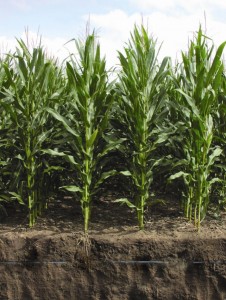 Water is a precious commodity. Just ask California growers trying to navigate through a drought that is said to be one of the worst since the 1500s.
Water is a precious commodity. Just ask California growers trying to navigate through a drought that is said to be one of the worst since the 1500s.
In March, the California Farm Water Coalition upgraded its estimate of acres growers will leave idle this year to 800,000, up from 500,000, because of a lack of water. According to USDA’s Drought Monitor, the drought in 95% of the state is being called “Severe” to “Exceptional.”
What can California and growers in the West do? Unfortunately, options are limited. Conservation is an obvious solution — and most growers in the West are already well down that road. During the last couple of decades, many have turned their attention to drip irrigation, which is considered to be the most efficient way to water crops.
Continue reading
 Micro-sprinklers have long been used to provide climate control and irrigate fruit, nut and cover crops. Now, micro-sprinklers can be used as part of an integrated pest management (IPM) plan in row crops, as well. By placing a grid of micro-sprinklers above the crop and operating it a few times a week, dust is washed off the leaves and humidity is increased – suppressing harmful pests and encouraging beneficial insects. For example, mites and spider mites favor hot, dusty environments, whereas beneficial predatory insects, such as persimilis, thrive best where humidity levels are between 60 to 90 percent. By applying a light application of water to the crop several times a week, dust, mites and webbing are washed off while the resulting increased humidity encourages beneficial predator species.
Micro-sprinklers have long been used to provide climate control and irrigate fruit, nut and cover crops. Now, micro-sprinklers can be used as part of an integrated pest management (IPM) plan in row crops, as well. By placing a grid of micro-sprinklers above the crop and operating it a few times a week, dust is washed off the leaves and humidity is increased – suppressing harmful pests and encouraging beneficial insects. For example, mites and spider mites favor hot, dusty environments, whereas beneficial predatory insects, such as persimilis, thrive best where humidity levels are between 60 to 90 percent. By applying a light application of water to the crop several times a week, dust, mites and webbing are washed off while the resulting increased humidity encourages beneficial predator species. On Friday, July 25, 2014 at 1:00PM (Pacific Time), the Grange Network will be hosting a 60-minute, FREE webinar to discuss how irrigation uniformity and management affect plant health. Keith Backman, Consultant Manager of Dellavalle Laboratory will lead the discussion.
On Friday, July 25, 2014 at 1:00PM (Pacific Time), the Grange Network will be hosting a 60-minute, FREE webinar to discuss how irrigation uniformity and management affect plant health. Keith Backman, Consultant Manager of Dellavalle Laboratory will lead the discussion. The use of flood and center pivot irrigation of crops via the waters of the Ogallala Aquifer is as hot a discussion topic as the current drought.
The use of flood and center pivot irrigation of crops via the waters of the Ogallala Aquifer is as hot a discussion topic as the current drought. At Toro, we recently added
At Toro, we recently added  We are excited to announce the latest upgrade to our popular AquaFlow
We are excited to announce the latest upgrade to our popular AquaFlow  Water is a precious commodity. Just ask California growers trying to navigate through a drought that is said to be one of the worst since the 1500s.
Water is a precious commodity. Just ask California growers trying to navigate through a drought that is said to be one of the worst since the 1500s.